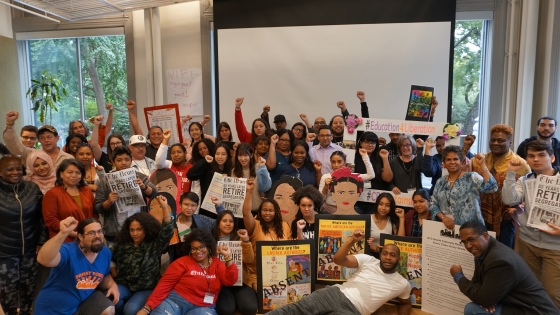INTRODUCTION
During the spring of 2018, teachers in West Virginia, Kentucky, Oklahoma, Arizona, Colorado, North Carolina and Puerto Rico took to the streets demanding greater investment in their public schools. Their protests emerged, in part, out of frustration that so much school funding, slashed during the Great Recession of 2008, has yet to be restored.
But for African American and Latino communities, the under-funding of public schools goes back generations. Over the past fifty years we have shortchanged students and their schools by hundreds of billions of dollars in federal education funding alone.
Policy-makers argue that there is no more money for education—especially in districts serving low-income and Black and Brown children. Yet, there is a direct correlation between dwindling resources for public schools and the ongoing political proclivity for transferring public dollars to the nation’s wealthiest individuals and corporations. The rich are getting richer. Our schools are broke on purpose.
In a 2006 address then-President of the American Educational Research Association (AERA) Gloria Ladson-Billings introduced the concept of the “education debt.”1 Focusing solely on the “achievement gap,” she argued, failed to acknowledge the historic, economic, sociopolitical and moral foundations of the disparate educational outcomes between white students and students of color.
Confronting the Education Debt, by the Alliance to Reclaim Our Schools, embraces Ladson-Billings’ theory and argues that still today, the relative disenfranchisement of communities of color has allowed elected policymakers to pursue priorities that deny millions of children the educational opportunities they deserve.
Instead of funding our schools, policy decisions are made that increase personal and corporate wealth, drawing down public revenues in the process. Instead of funding our schools, we have seen an explosion of policies that criminalize Black and Brown communities, including staffing their schools with police officers instead of guidance counselors. Instead of funding public schools, privatization— through charters and vouchers—soaks up education dollars and strips the budgets of traditional public districts. All of these trends continue to compound the education debt.
Confronting the Education Debt
Use the button below to download a PDF of the report
View Full Report
